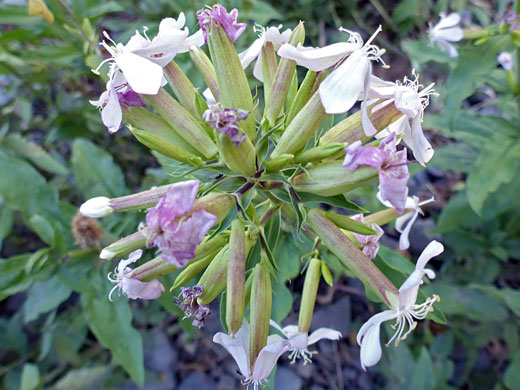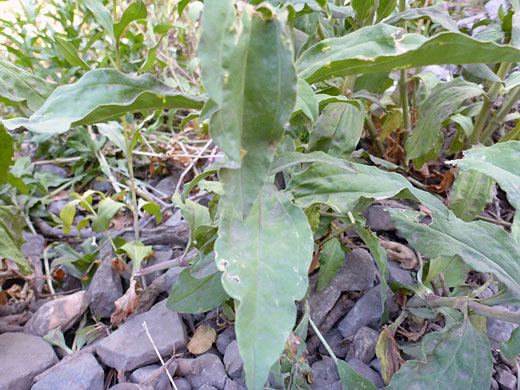Saponaria Officinalis, Common Soapwort
Plants > Wildflowers > Caryophyllaceae > Saponaria Officinalis
Common name:
Common soapwort
Family:
Scientific name:
Saponaria officinalis
Main flower color:
Range:
All the western states (non native)
Height:
Up to 3 feet
Habitat:
Streamsides, roadsides, fields; disturbed ground; from sea level to 8,500 feet
Leaves:
Alternate, ovate to oblanceolate, up to 6 inches long and 1.7 inches wide
Season:
June to October
Saponaria officinalis is by far the most widespread of two species of this non-native genus to have become established in the US, where it is found over a broad elevation range. Stems are up to 3 feet high, sometimes branching towards the top, and bearing large, ovate leaves at alternate intervals. Leaves have a central vein and one, sometimes two pairs of side veins, which extend most of the way to the tip. Leaves are usually stalkless. All plant parts are hairless.
The five light green sepals are fused for most of their length to form a tubular calyx, lined by up to 25 thin, parallel veins. The unfused sepal tips are triangular. The calyx tends to become purplish later in the season. The five petals are colored white or pale pink (purple when withered); they are clawed (narrow at the base), and have a small notch at the tip. The calyx is around one inch long, while the petals are a little shorter.
The five light green sepals are fused for most of their length to form a tubular calyx, lined by up to 25 thin, parallel veins. The unfused sepal tips are triangular. The calyx tends to become purplish later in the season. The five petals are colored white or pale pink (purple when withered); they are clawed (narrow at the base), and have a small notch at the tip. The calyx is around one inch long, while the petals are a little shorter.
All Contents © Copyright The American Southwest | Comments and Questions | Contribute | Site Map




